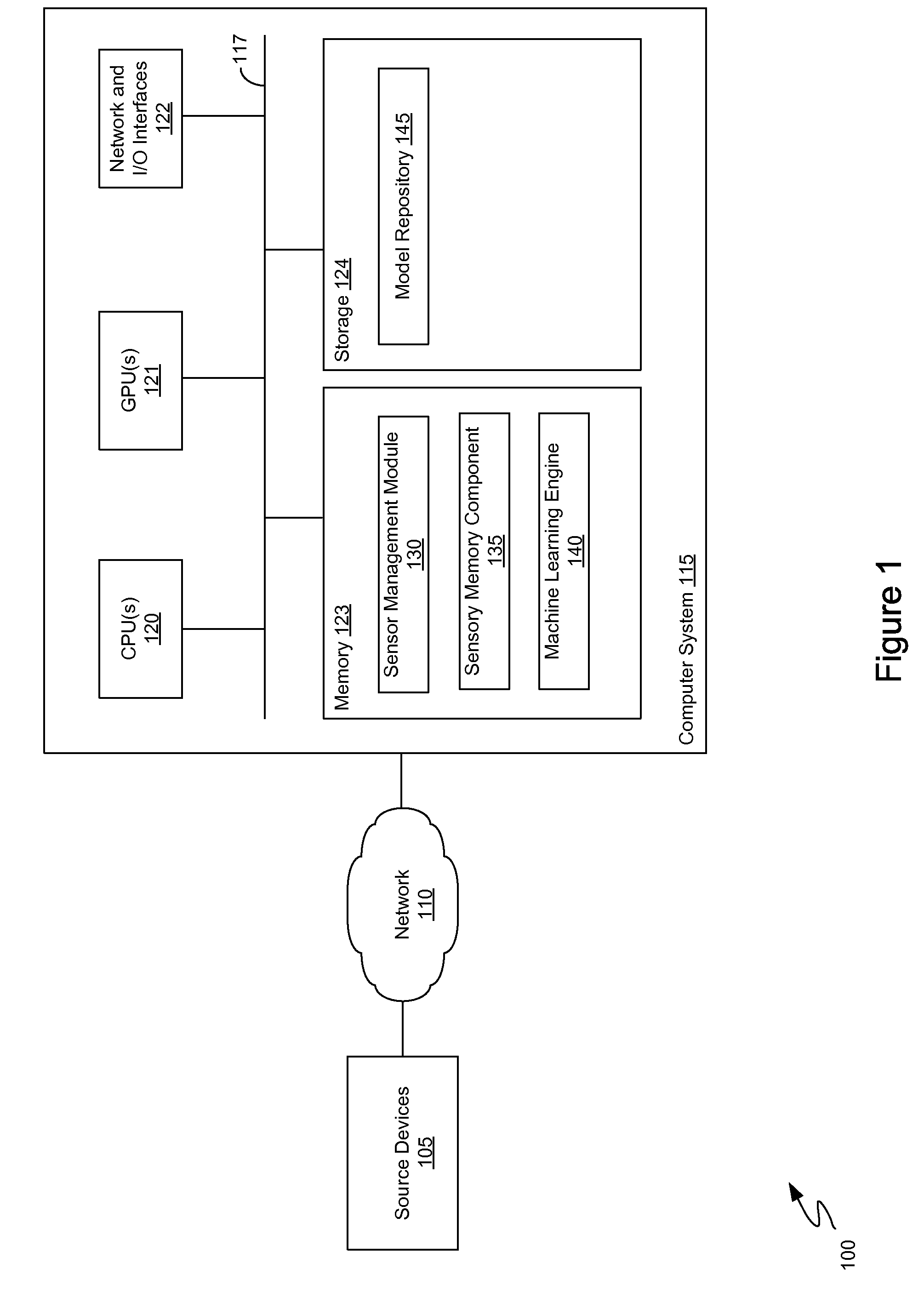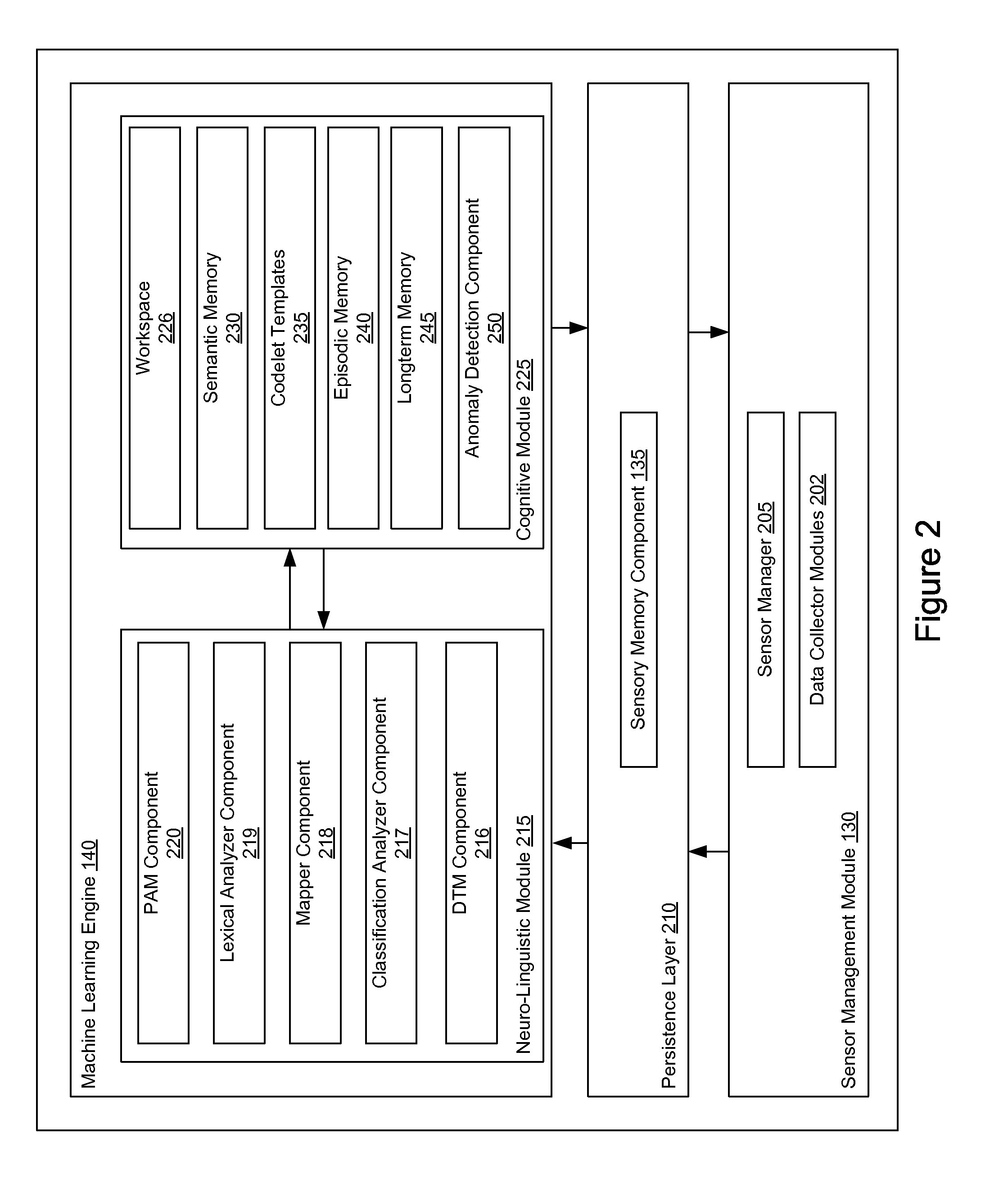Lexical analyzer for a neuro-linguistic behavior recognition system
a neuro-linguistic and behavior recognition technology, applied in the field of data analysis systems, can solve problems such as rigid rules-based approach, system inability to recognize such behaviors, and advance knowledg
- Summary
- Abstract
- Description
- Claims
- Application Information
AI Technical Summary
Benefits of technology
Problems solved by technology
Method used
Image
Examples
Embodiment Construction
[0019]Embodiments presented herein describe a behavior recognition system. The behavior recognition system may be configured with one or more data collector components that collect raw data values from different data sources (e.g., video data, building management data, SCADA data). For example, a behavior recognition system may be configured for video surveillance. The behavior recognition system may include a data collector component that retrieves video frames in real-time, separates foreground objects from background objects, and tracks foreground objects from frame-to-frame. The data collector component may normalize the video frame data into numerical values (e.g., falling within a range from 0 to 1 with respect to a given data type).
[0020]In one embodiment, the behavior recognition system includes a neuro-linguistic module that performs neural network-based linguistic analysis on the collected data. Specifically, for each type of data monitored by a sensor, the neuro-linguisti...
PUM
 Login to View More
Login to View More Abstract
Description
Claims
Application Information
 Login to View More
Login to View More - R&D
- Intellectual Property
- Life Sciences
- Materials
- Tech Scout
- Unparalleled Data Quality
- Higher Quality Content
- 60% Fewer Hallucinations
Browse by: Latest US Patents, China's latest patents, Technical Efficacy Thesaurus, Application Domain, Technology Topic, Popular Technical Reports.
© 2025 PatSnap. All rights reserved.Legal|Privacy policy|Modern Slavery Act Transparency Statement|Sitemap|About US| Contact US: help@patsnap.com



